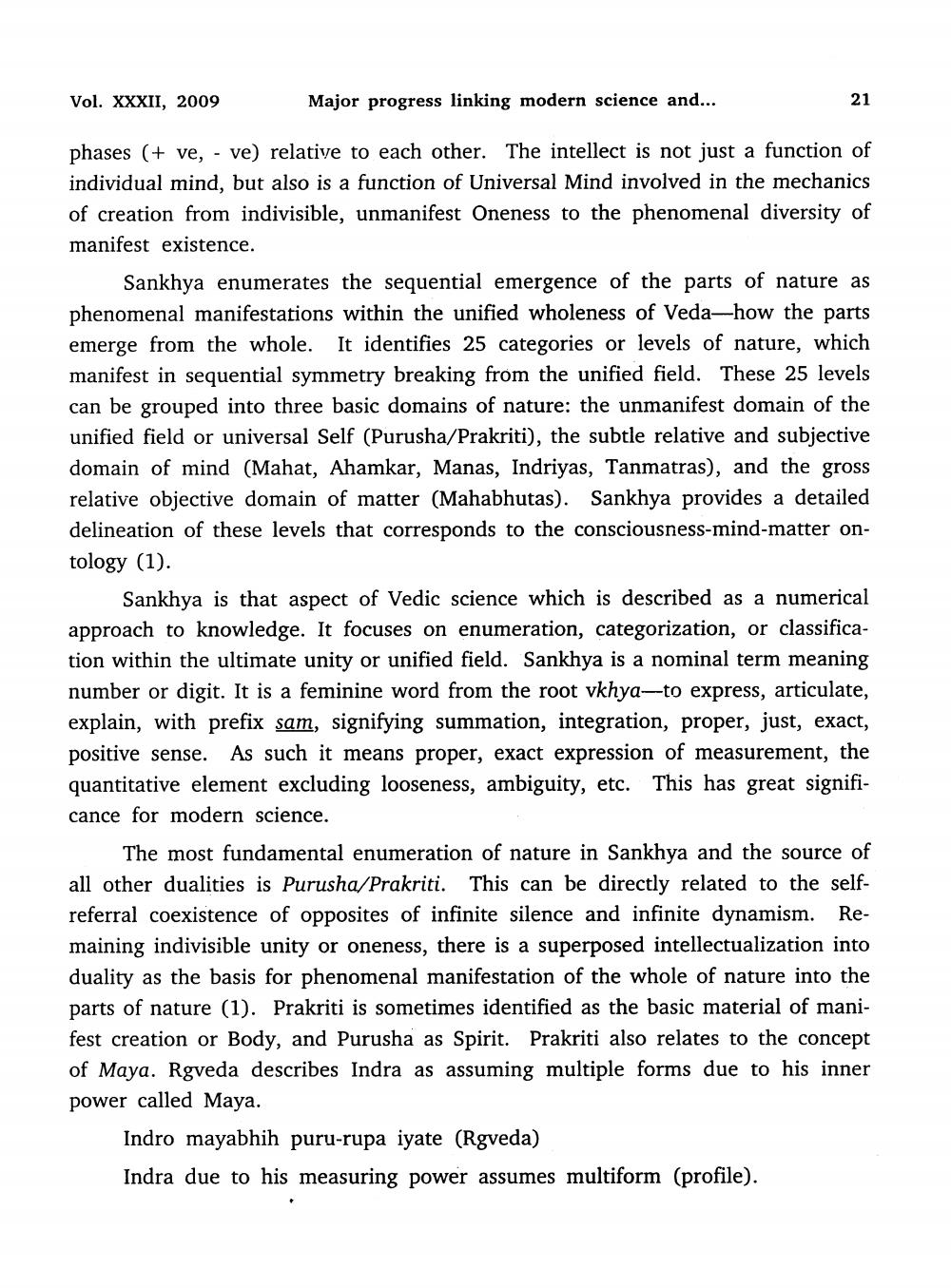________________
Vol. XXXII, 2009
Major progress linking modern science and...
phases (+ ve, - ve) relative to each other. The intellect is not just a function of individual mind, but also is a function of Universal Mind involved in the mechanics of creation from indivisible, unmanifest Oneness to the phenomenal diversity of manifest existence.
Sankhya enumerates the sequential emergence of the parts of nature as phenomenal manifestations within the unified wholeness of Veda-how the parts emerge from the whole. It identifies 25 categories or levels of nature, which manifest in sequential symmetry breaking from the unified field. These 25 levels can be grouped into three basic domains of nature: the unmanifest domain of the unified field or universal Self (Purusha/Prakriti), the subtle relative and subjective domain of mind (Mahat, Ahamkar, Manas, Indriyas, Tanmatras), and the gross relative objective domain of matter (Mahabhutas). Sankhya provides a detailed delineation of these levels that corresponds to the consciousness-mind-matter ontology (1).
Sankhya is that aspect of Vedic science which is described as a numerical approach to knowledge. It focuses on enumeration, categorization, or classification within the ultimate unity or unified field. Sankhya is a nominal term meaning number or digit. It is a feminine word from the root vkhya-to express, articulate, explain, with prefix sam, signifying summation, integration, proper, just, exact, positive sense. As such it means proper, exact expression of measurement, the quantitative element excluding looseness, ambiguity, etc. This has great significance for modern science.
The most fundamental enumeration of nature in Sankhya and the source of all other dualities is Purusha/Prakriti. This can be directly related to the selfreferral coexistence of opposites of infinite silence and infinite dynamism. Remaining indivisible unity or oneness, there is a superposed intellectualization into duality as the basis for phenomenal manifestation of the whole of nature into the parts of nature (1). Prakriti is sometimes identified as the basic material of manifest creation or Body, and Purusha as Spirit. Prakriti also relates to the concept of Maya. Rgveda describes Indra as assuming multiple forms due to his inner power called Maya.
Indro mayabhih puru-rupa iyate (Rgveda) Indra due to his measuring power assumes multiform (profile).




